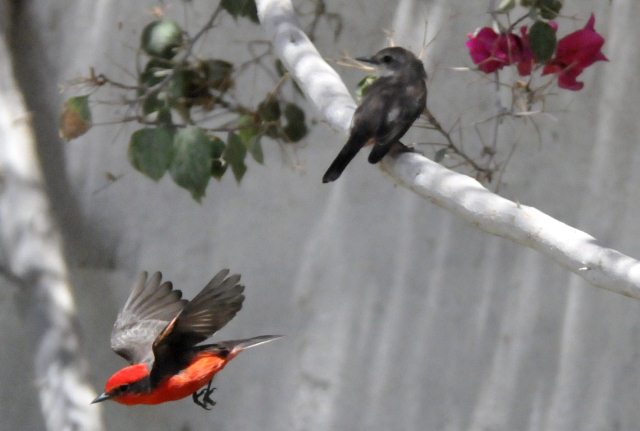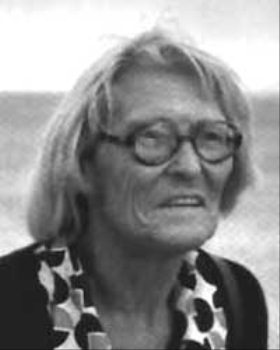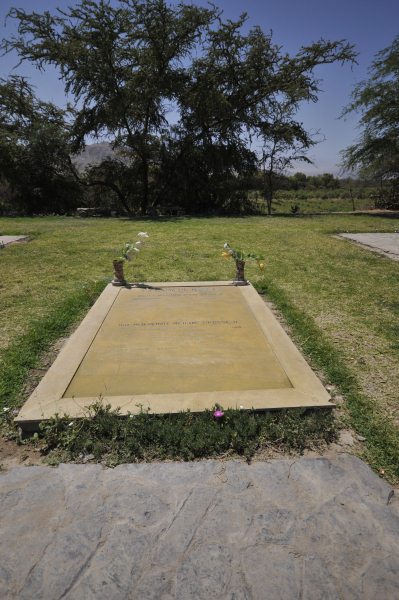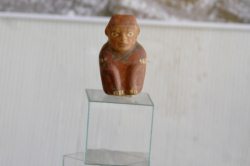Maria Reiche Museum

|
Maria Reiche
Museum
 We stopped at the
Maria Reiche Museum en route to the Nazca Lines
Early life and
education: Maria Reiche was born
on the 15th of May 1903 in Dresden. She studied
mathematics, geography and languages at the Dresden Technical
University. In
1932 she began work as a nanny and
teacher for the children of a German consul in
Cuzco. In 1934 she lost one of her fingers to
gangrene, (the locals tell of the Monkey having five fingers on one hand and
four on the other as spooky and apt). The same
year she became a teacher in Lima and did
scientific translations. When World War II broke
out, she decided not to return to Germany.
 Career in Archeology: In 1940 Reiche became an assistant to American archaeologist Paul Kosk, who had discovered the Nazca lines. Around 1946 she began to map the figures in Nazca. After Kosok left in 1948, she continued the work and mapped the area. Reiche theorised that the builders of the lines used them as a sun calendar and an observatory for astronomical cycles. Because the lines can be clearly seen only from above, she persuaded the Peruvian Air Force to help her with aerial photographic surveys. She worked alone in her home in Nazca. She published her theories in the book The Mystery of the Desert, which had a mixed response from scholars. She used the profits from the book to campaign for preservation of the Nazca desert and to hire guards for the property and assistants for her work. Wanting to preserve the Nazca lines from encroaching traffic - the area is near the Pan American highway - and various government schemes, Reiche spent considerable money in the effort in lobbying and education. She convinced the government to restrict public access to the area. She sponsored construction of a tower near the highway so that visitors could have an overview of the lines.
  The Museum has the work / living room as Maria left it and a model of her at work Reiche's health deteriorated over the years. She used a wheelchair, suffered from skin ailments and lost her sight. In her later years she also suffered from Parkinson's disease. Marie Reiche died of ovarian cancer on the 8th of June 1998 in an Air Force hospital in Lima. Maria Reiche was buried near Nazca with official honours.

Maria's Memorial Stone and her grave, with beautiful flowers and within earshot of the Cessna's flying over her beloved Nazca Lines
Legacy and Honours: In 1995 UNESCO declared the Nazca lines a World Heritage Site. In addition to honours at her funeral, her former home has been turned into the museum. The Maria Reiche centre in Nazca provides information about her life and work. The centre sponsors lectures on Nazca, a scale model, current research, and different theories about the origin and construction of the lines.
 
In the museum we saw a Nazcan Mummy - the first we have seen with tattoos, seen here on her arms
Some local artifacts
Professor
Gerald Hawkins and his group went to Nazca to prove the astronomical
Theory of Maria Reiche but was unsuccessful. In 1968, a study by the National
Geographic Society determined that, while some of the Nazca lines did point to
the positions of the Sun, Moon and certain stars two thousand years ago, it was
no more than could be expected by mere chance. In 1973, Dr Gerald Hawkins
studied one hundred and eighty six lines with a computer program and found that
only twenty per cent had any astronomical orientation - again no more than
by pure chance.
   In the garden we saw this Vermillion
Flycatcher and his wife. Off he flew to swoop on an unsuspecting fly,
whilst his wife looked on. Maria would approve
 ALL IN ALL A WOMAN WHO DEDICATED HER LIFE TO THE MYSTERY OF THE NAZCA
LINES
|




